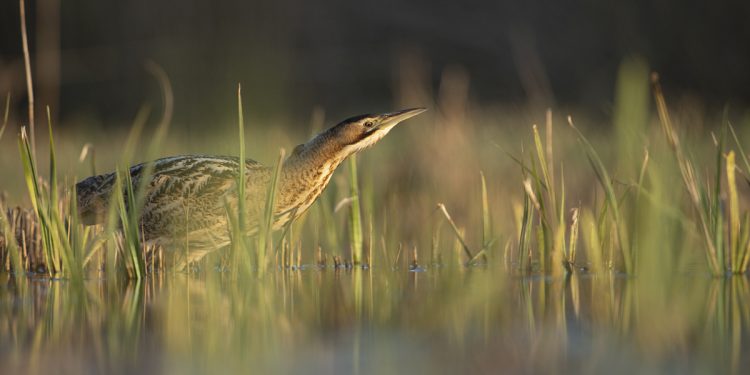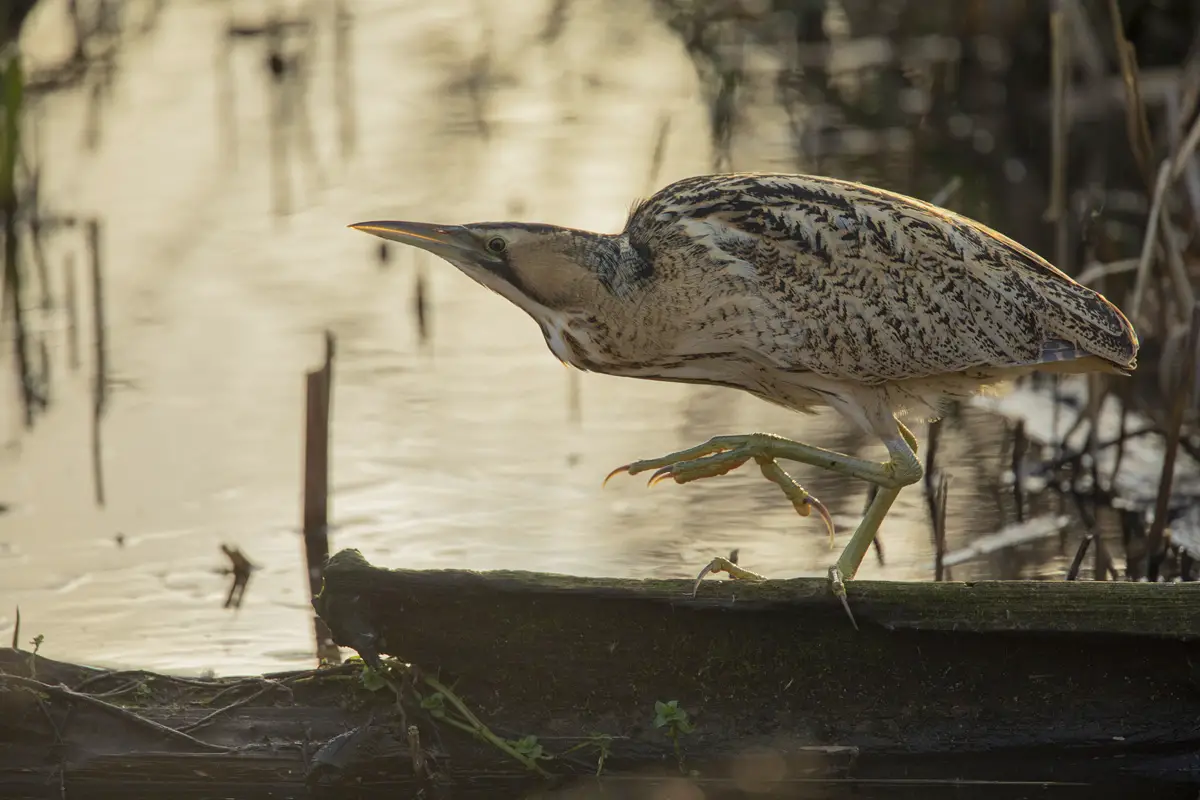Britain’s Loudest Bird Makes a Booming Return to Yorkshire Wetlands

Yorkshire’s wetlands are ringing with the distinctive call of one of Britain’s rarest birds, as conservation efforts across the region spark a remarkable Bittern boom.
The unmistakable ‘booming’ call of the male Bittern – often likened to blowing across a glass bottle – has become a much more common sound in Yorkshire’s reedbeds this breeding season. For the first time ever, a record-breaking nine booming males have been recorded across the RSPB Aire Valley reserves, including a high of seven at St Aidan’s alone. This marks a significant milestone in the region’s conservation success story.
The Bittern, an elusive and secretive member of the heron family, is one of the UK’s rarest breeding birds and is classified as an Amber-listed and Schedule 1 protected species. Once extinct as a breeding bird in Yorkshire, its return and steady rise are thanks to years of dedicated wetland restoration across the county.
Yorkshire’s Reedbed Revival
The RSPB has been at the heart of this transformation, managing key nature reserves like St Aidan’s near Leeds, Old Moor in the Dearne Valley, and Blacktoft Sands in East Yorkshire. These sites now play a crucial role in the survival of the species. In fact, over half of all UK Bitterns are now found on RSPB-managed land.
Bitterns rely on healthy reedbed habitats, where they feed on fish, amphibians, and insects along the water’s edge. During spring and early summer, males emit their characteristic low-frequency ‘booms’ to attract mates and establish territories – a sound that can carry for miles. Conservationists use these calls, along with observed feeding flights, to track breeding activity and monitor the bird’s recovery.
At RSPB Old Moor near Barnsley, four booming males were recorded this season, alongside one more at Bolton Ings. Together, these five ‘boomers’ reflect the growing spread of Bitterns across South Yorkshire. At least five chicks have already fledged in the Dearne Valley this year, though some nests are hard to monitor and the true figure may be even higher. Since Bitterns first nested at Old Moor just 11 years ago, 72 chicks have successfully fledged.
Meanwhile, over in East Yorkshire, four booming males have been heard at RSPB Blacktoft Sands, with at least six young confirmed from two nests. Conservationists believe there may be even more hidden among the 50 acres of reedbed – testimony to the difficulty of spotting these shy birds.
Bitterns first bred at Blacktoft Sands in 2001, marking their reappearance in Yorkshire after decades of absence. The species had vanished from the UK in the late 1800s due to habitat loss and persecution, only to return in the early 20th century. But by 1997, numbers had plummeted again, with just 11 booming males left across the entire country and none breeding in Yorkshire.
A National Recovery Rooted in Yorkshire
This year’s Bittern activity in Yorkshire mirrors a national resurgence. The 2024 survey by the RSPB and Natural England reported a record 283 booming males across the UK – a 20% rise on previous years and the biggest leap since records began. RSPB reserves alone accounted for 138 of these.
The rise of Bitterns in Yorkshire has also captured the public’s imagination. Earlier this year, BBC wildlife researcher Jack Baddams hosted four sold-out guided Bittern walks at Yorkshire reserves – and was thrilled to spot his first ever Bittern at St Aidan’s during the summer. So far, three nests have been confirmed at the site, with more expected.
Lydia Tague, Senior Reserve Manager, RSPB St Aidan’s, said: “To have a record year for booming Bitterns at our Aire Valley nature reserves is brilliant news. Wetlands are incredible places for nature and it’s fantastic to see Bittern numbers increasing across Yorkshire – thanks to the hard work of staff and volunteers to create safe havens for this iconic species. It just shows that with the right evidence, and a shared long-term commitment, we can bring back species from the brink and help restore nature.”
The Bittern’s return from the brink stands as one of the UK’s most compelling wildlife comebacks – and much of that success is now centred firmly in Yorkshire. With continued conservation and community support, the future is sounding loud and clear for Britain’s noisiest bird.
images: Ben Andrew (RSPB Images)










